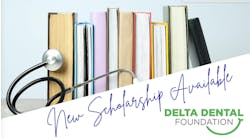by JOANN R. GURENLIAN, RDH, PhD
I am co-teaching a course to undergraduate dental hygiene students on prevention and management of medical emergencies. One of the assignments we had the students address was researching a designer drug and determining steps to take for preventing a medical emergency in the practice setting. Since many of the students in this class are college-age, we thought it would be eye-opening for them to learn more about substance abuse through this activity. While the students may have learned some key information, my colleague and I certainly had our eyes opened as well. This exercise made me consider how much we really know and pay attention to the signs of drug (and designer drug) use.
Consider reading: Professionalism among educators
Consider reading: Are you protecting your license?
Consider reading:How dental hygienists should plot their 2013 goals
Just when I think I have finally learned something about cocaine, heroin, marijuana, meth, and the oxys, it turns out there are many more designer drugs that are being used. My students taught me about ecstasy, smiles, spice, and a host of others. One can inject, snort, swallow, and even insert a drug in the eye, all to get "high" and feel that rush of reward, or relief from pain. Along with that sensation, however, comes the downside including being malnourished, tachycardia, hypertension, increased risk for blood clots, respiratory depression, myocardial infarction, and stroke. Oral manifestations may include xerostomia, caries, periodontal disease, and evidence of tooth grinding and clenching. Because there are significant drug interactions between designer drugs and local anesthesia, caution must be used to avoid a potential medical emergency. Further, caution must be used when prescribing other narcotics for oral pain control due to potential drug interactions and the need to avoid supporting addictive behaviors.
Once the students had completed their research and summarized their findings, I asked many of them if it would be safe to treat me if I had just used one of these drugs one hour before my dental hygiene appointment. After all, some individuals do not enjoy their dental and dental hygiene appointments as much as we in the profession. They might be inclined to use something to settle their nerves so they could tolerate treatment. So, is it safe to provide care in this circumstance? Are there other treatment considerations that must be evaluated prior to performing dental hygiene treatment? And, would you know if I had used a designer drug?
Interestingly, prior to this assignment, the students were asked to review a new, lengthier health history that asked questions about drug use and dependency, including past and current drug use. The students felt that these questions were too personal, and would not ask their patients questions about drug use. Through both assignments, students felt they would "know" if their patient had used a designer drug and would recognize the signs of drug abuse.
I know that I am fairly naïve when it comes to street drugs. How naïve are you? Do you make the same assumptions as these new dental hygiene students? Would you be able to recognize patients who abused drugs or used designer drugs? Would you proceed with treatment? I would venture to say that chances are quite high that you have been treating these patients, but likely have not evaluated for this situation or considered the potential for medical emergency.
Consider the cute little grandmother who reports that she has had severe osteoarthritis in her hips and knees. Might she be a designer drug user? How about that executive of a bank who has tremendous pressure in his job? What about that college student who has to excel in every course? Would any of these individuals be drug addicts?
Let's face it; not everyone has to look like they run a meth lab to abuse drugs. Some of my nicest, most sincere patients have a drug abuse problem. We just don't expect them to because they don't fit the stereotype we have established. So, how do we know for sure? We ask and examine for the signs. Yes, it is definitely personal. So is putting our hands in someone's mouth and palpating their head and neck. Checking someone's vital signs is personal. Asking about oral habits is personal. Everything we do in dental hygiene is personal. Inquiring about someone's health and signs of drug abuse may be personal, but it may also be the one moment that the individual sees someone who is willing to show an interest. Maybe those questions will be the impetus to seek professional assistance or at least turn a corner toward improved health. If the army can move beyond don't ask, don't tell, maybe we should do so as well. RDH
JOANN R. GURENLIAN, RDH, PhD, is president of Gurenlian & Associates, and provides consulting services and continuing-education programs to health-care providers. She is a professor and interim dental hygiene graduate
program director at Idaho State University, and president-elect of the International Federation of Dental Hygienists
Past RDH Issues





